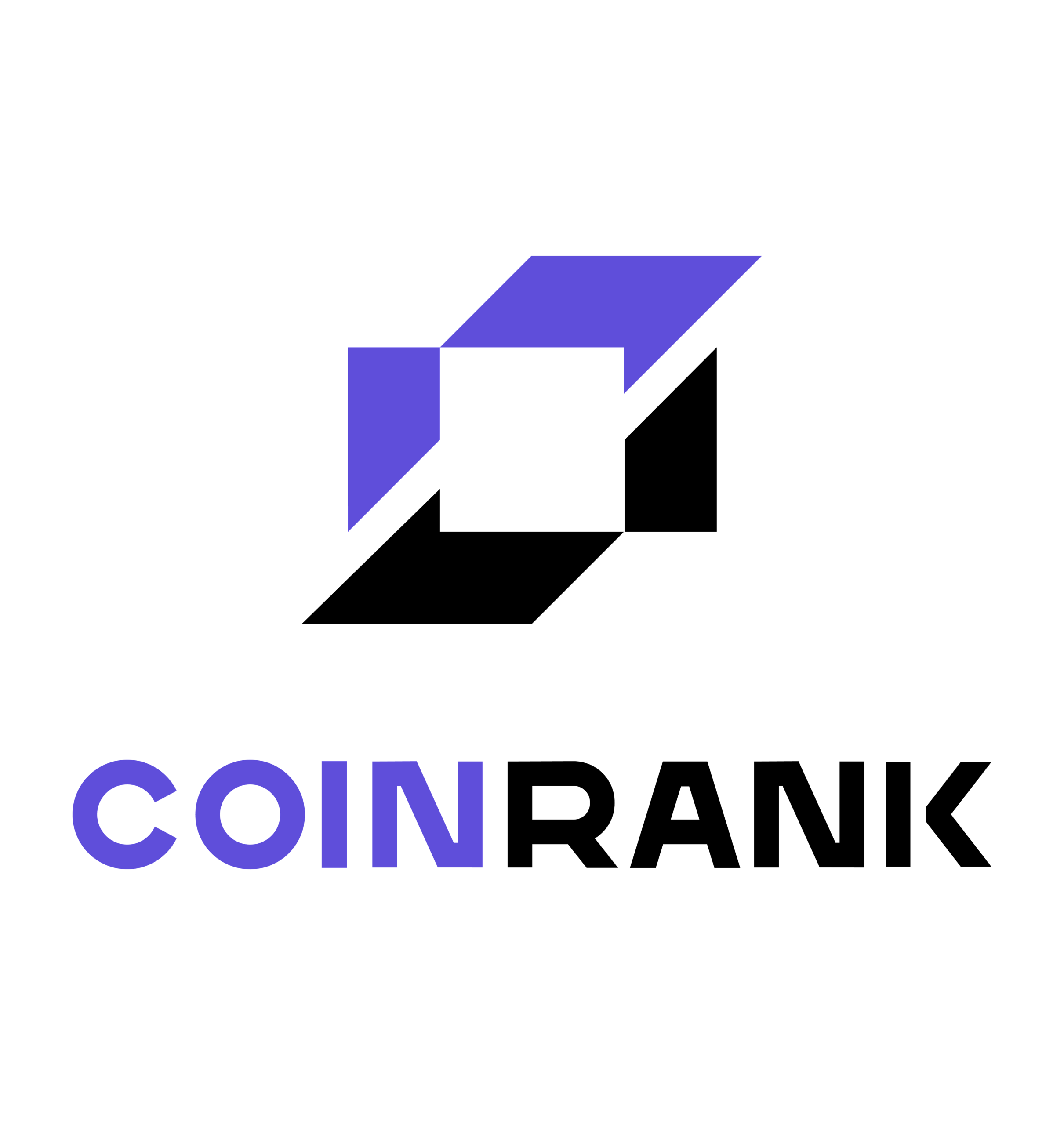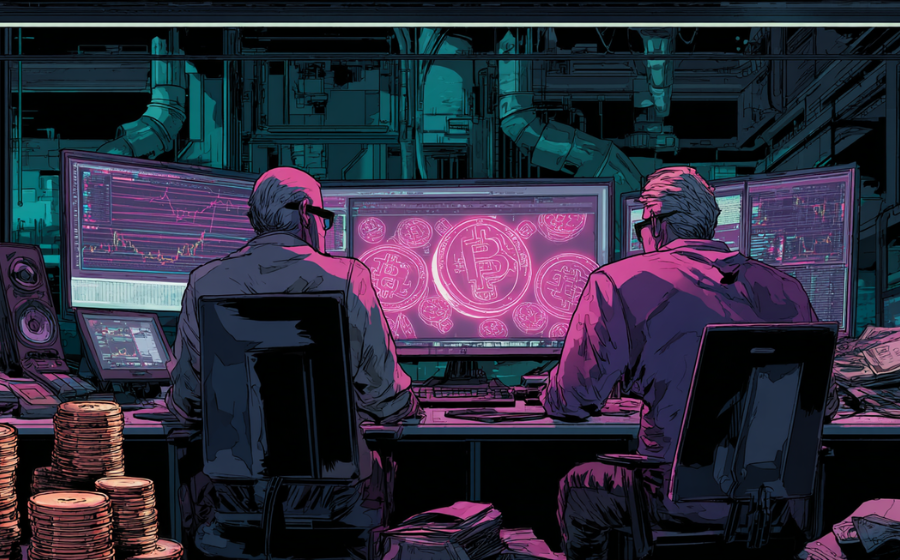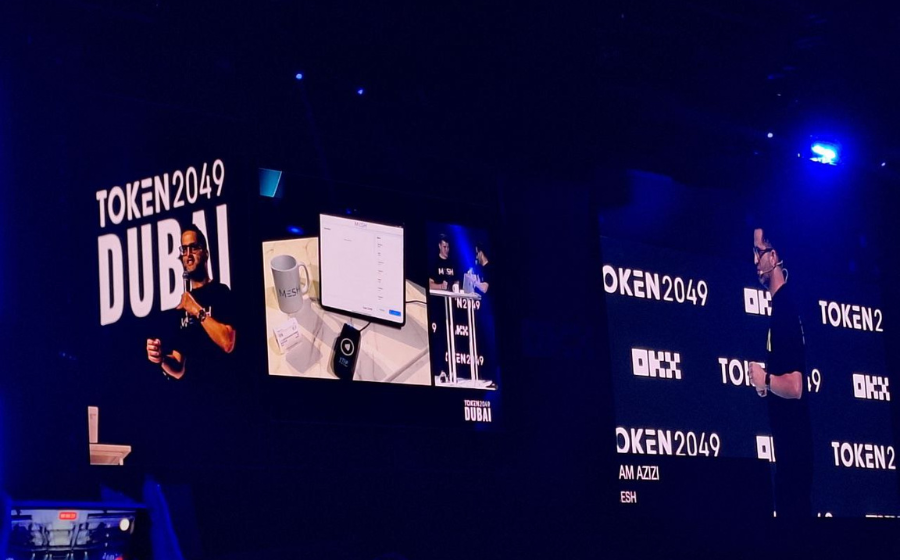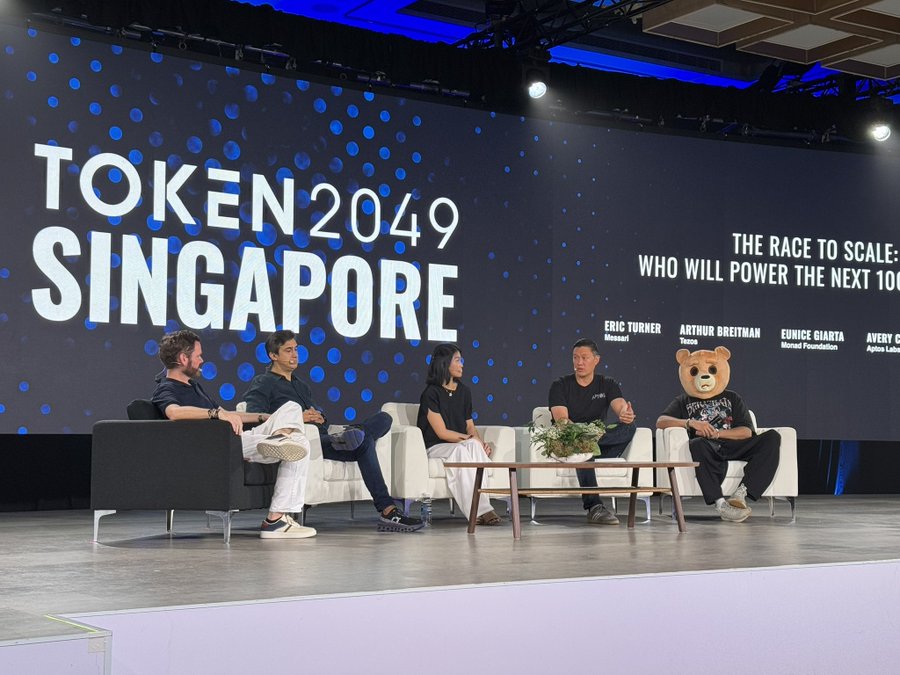
KEYTAKEAWAYS
-
The panelists agreed that chasing “100M users” as a vanity metric is meaningless—real adoption will come from users willing to pay for genuine on-chain utility.
-
Monad, Tezos, and Berachain each offered different scaling strategies: performance optimization, verifiable trust, and incentive realignment through Proof-of-Liquidity.
-
The biggest hurdles are not TPS but onboarding, regulation, and business models—making blockchain invisible to users is the real key to scale.

CONTENT

On October 2, 2025, TOKEN2049 Singapore put the spotlight on one of the most fundamental questions in crypto: how to bring the next 100 million users on-chain. The panel was moderated by Messari CEO Eric Turner and featured a mix of perspectives across blockchain design, infrastructure, and incentive models. On stage were Tezos co-founder Arthur Breitman, Monad Foundation co-founder and GM Eunice Giarta, and “Smokey the Bera,” co-founder of Berachain. Together, they represented three key dimensions of scaling: performance, user experience, and incentives.
BEYOND USER NUMBERS: DEFINING REAL VALUE
The discussion opened with a simple but often overlooked question: how do we define a “user”? Is it a wallet address? A trader on an exchange? Or the person actually deciding to pay fees on-chain?
This wasn’t semantics—it goes directly to how networks generate revenue. In the past, when block space was scarce, high gas fees translated into token value. But in a future where block space becomes abundant and clearing prices fall toward zero, vanity metrics like “100M DAUs” lose meaning. What matters is who is paying for real utility.
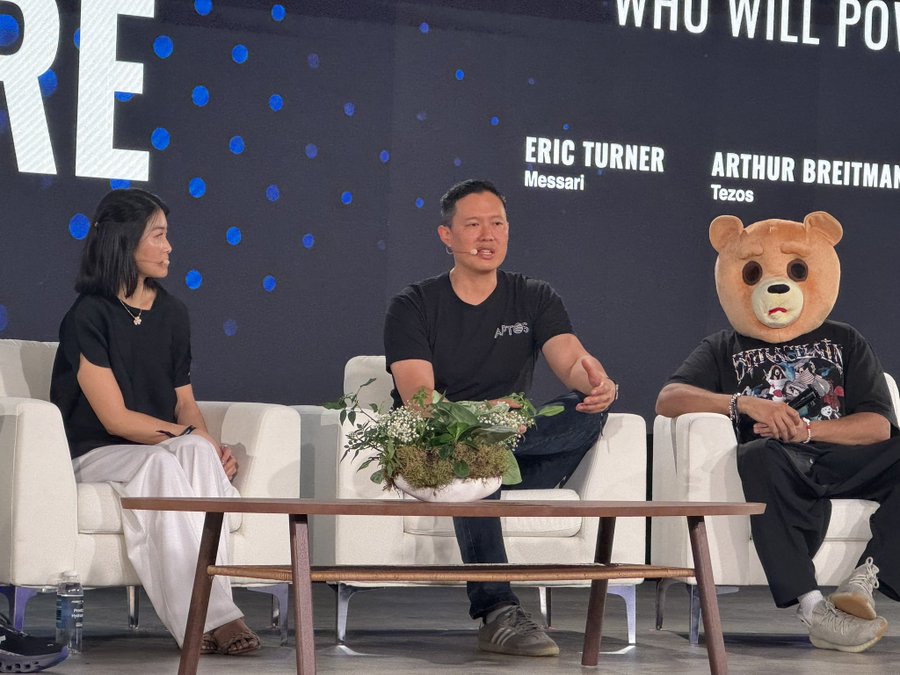
The consensus across panelists was clear: scale alone isn’t enough. Sustainable growth will come from onboarding users who are willing to pay for meaningful services, even if that number is smaller at first.
FROM TPS TO INVISIBLE BLOCKCHAINS
Eunice Giarta positioned Monad as a platform built for “chain-as-cloud.” The point is not only to increase TPS, but also to reduce friction in areas like login, key management, settlement, and storage. Only then can mainstream internet-scale applications confidently migrate 1%, then 5%, then 10% of their users on-chain without being pushed back by volatility or high costs.
Arthur Breitman of Tezos argued that success is less about counting addresses and more about creating businesses that can only exist on-chain. Composability, verifiable data and identity, and cross-domain settlement are examples of functions that traditional systems cannot replicate easily. These are the kinds of unique utilities that will drive long-term adoption.
For Berachain, the focus is incentives. Their Proof-of-Liquidity (PoL) model aims to align security, liquidity, and ecosystem growth by turning block rewards into targeted incentives for applications that drive real TVL and transactions. In other words, inflation at the network layer becomes a growth budget for the app layer.
The shared idea was simple: scaling happens when users don’t feel like they are “using blockchain.” No seed phrases, no visible MEV, no complicated fee structures—just smooth, internet-like experiences.
WHEN USERS AREN’T HUMAN
Another theme was the rise of bots and AI agents as “users.” Should networks be optimized for agents that transact at high frequency? Panelists noted a few key points: 1. Human value remains the anchor. Agents may amplify activity, but human decision-making drives real willingness to pay. 2. Engineering resilience is critical. Networks must handle scripted surges without clogging or unfair ordering. 3. Legal and accounting clarity is needed. As agents transact on behalf of humans or businesses, proof of delegation and traceability will matter for enterprise adoption.
The framing was pragmatic: treat agents as high-frequency users, and humans as high-value users. Scaling must accommodate both.
THE FIRST THREE STEPS MATTER MOST
Panelists agreed that the hardest part of onboarding is not reaching “100 million” but helping each individual through their first three steps: • Login: Wallet access must feel like standard internet logins—fast and familiar. • First transaction: The first on-chain action needs to deliver clear, perceivable benefit (lower costs, unique rewards, or access to exclusive features). • Second use: Users need a reason to come back—whether it’s better settlement, lower counterparty risk, or access to broader liquidity.
Incentives can bring in new users, but retention begins only when these first steps are smooth and rewarding.
THREE CRITICAL GAPS
The conversation revealed three major gaps still holding the industry back: 1. Capability gap: Execution concurrency, cross-chain messaging, MEV control, and data availability must be productized for developers. 2. Regulatory gap: Enterprises need clarity on who provides KYC, billing, invoicing, and compliance if they are to scale beyond pilots. 3. Business gap: Inflation-driven rewards must connect to real conversion, turning “token emissions” into sustainable growth loops.
Each panelist’s approach mapped onto these gaps: Monad tackling performance, Tezos focusing on trust and verifiability, and Berachain redesigning incentive alignment.
SCALE ISN’T THE GOAL—UTILITY IS
“Who will power the next 100M users?” may not be the right question. A better one is: which kinds of utility are worth paying for?
When block space is abundant, when agents transact for us, and when wallets feel like standard accounts, scale becomes a byproduct. The real moat is aligning incentives, utility, and revenue.
TOKEN2049 this year offered a clear signal: the winning formula combines blockchain as invisible infrastructure, incentives as growth engines, and experiences that feel like the internet, not crypto. When these converge, the next 100 million users will arrive—not because of slogans, but because they want to.
>>> Read more:
【TOKEN2049 Singapore】The Rise Of Digital Asset Treasuries
【TOKEN2049 Singapore】Stablecoin Superapps: Real-World Crypto in Action
【TOKEN2049 Singapore】FROM APPS TO ASSETS: FINTECH’S LEAP INTO CRYPTO








